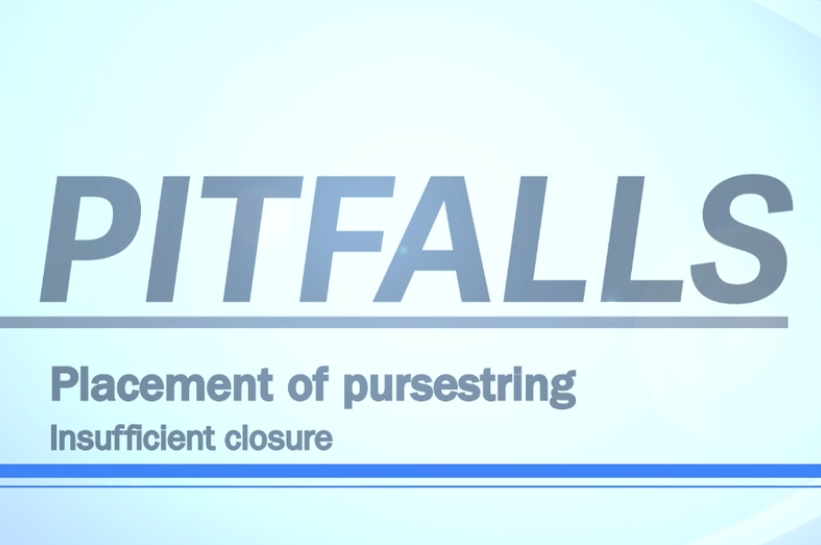Placement of Pursestring
Mathieu D’Hondt
Mohammed Abu Hilal
The purse string is perfomed with a Prolene 0 suture with a small needle; we prefer a Surgipro 0. A self-aiming needle holder will simplify the suturing.
It is important that the needle is positioned at a 90 degree angle with the suture holder otherwise the purse string will not be at an even distance from the flexible platform. We prefer to start the suturing at about 5 o’clock for a right handed surgeon, 7 o’clock for a left handed surgeon.
The suture should be characterized by small steps. The exit point of the suture should be the entry point for the next step. The suture should be full thickness, through all layers of the rectum, but avoiding deeper structures. Any deep bites could catch other structures like the endopelvic fascia, the lateral sidewall or the vagina.
There should be no folds in the suture line and it should be at a constant distance from the access channel. The first and the last stich should overlap so that there are no gaps in the suture line.
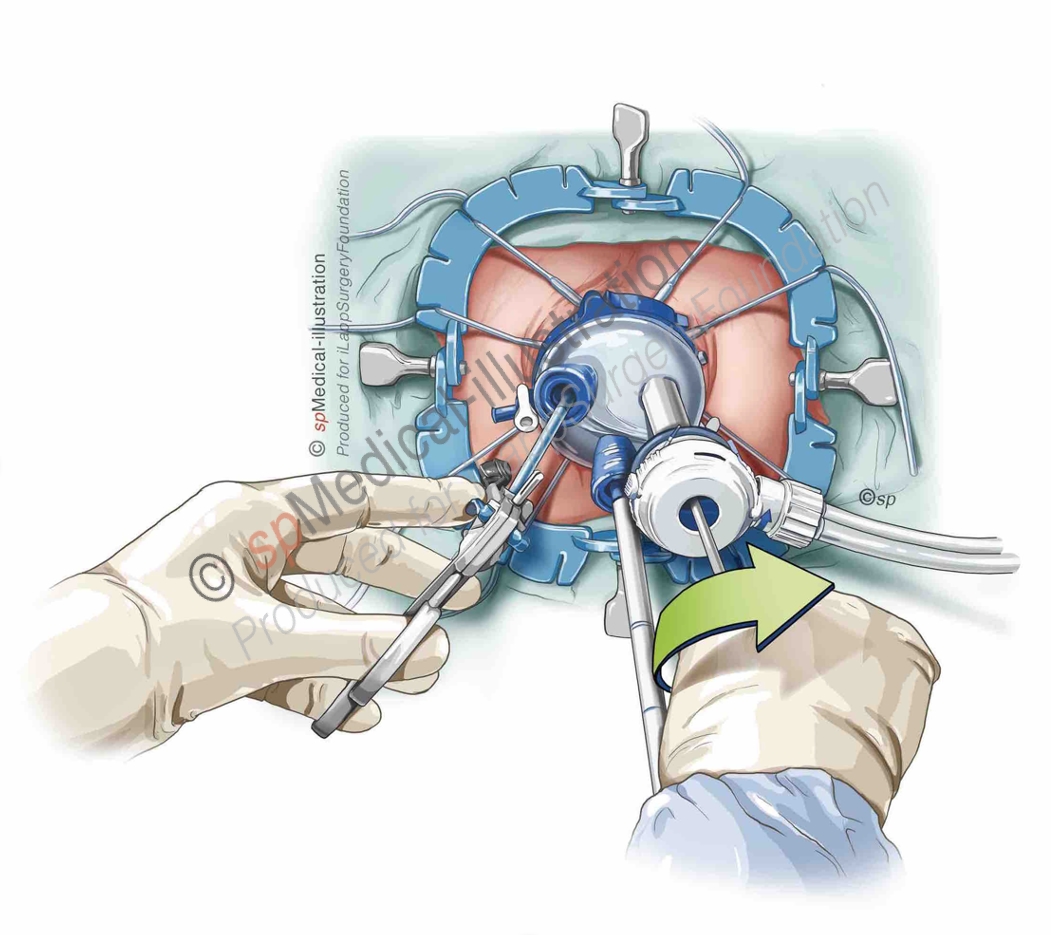
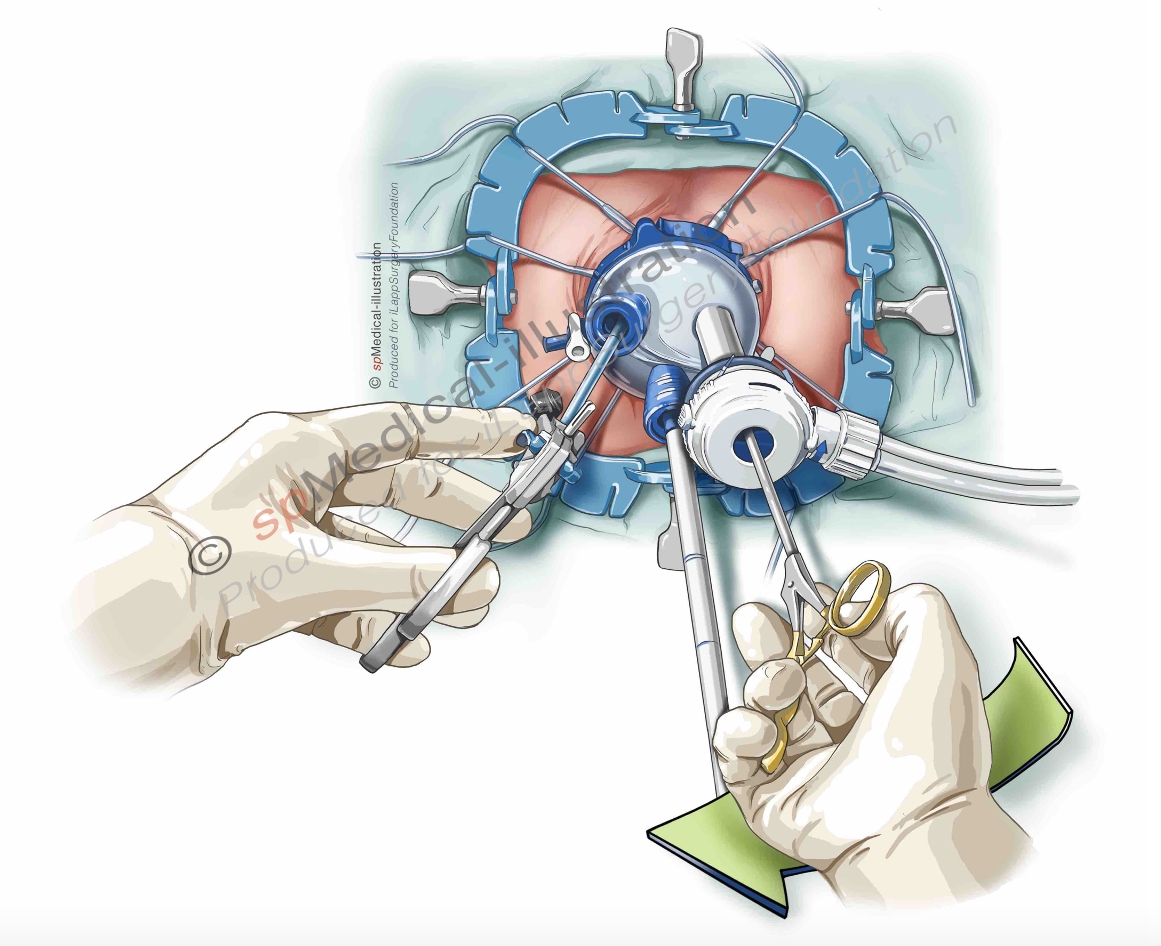
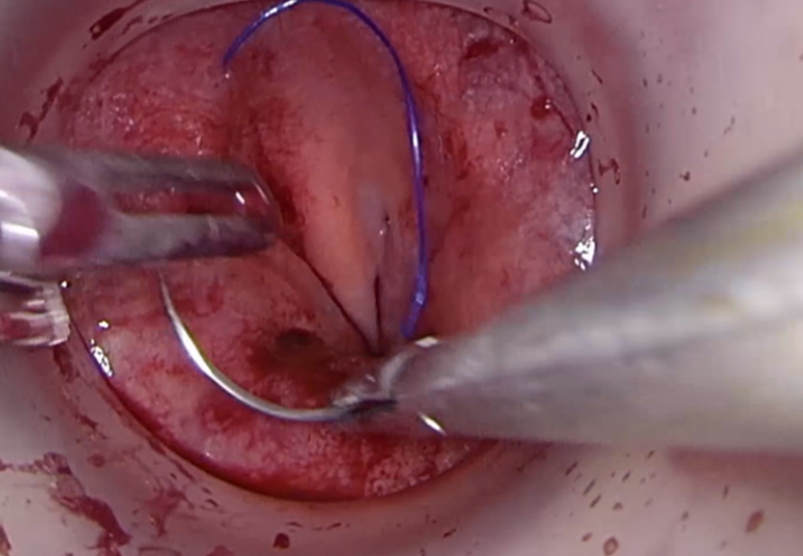
After completion of the suture the cap of the flexible platform is removed and the suture can be tightened by hand, which is much easier than using a knot-pusher or two needle-holders. Leave some length when cutting the ends of the tied suture as these can be helpful for manipulating the rectal stump afterwards.
For oncological reasons we find it very important not to touch the tumor with the laparoscopic instruments.
The pursestring stitch serves several functions:
- it is important to create an efficient use of the pneumopelvis, and avoid distension of the proximal colon
- it avoids soiling from above, particularly with regard to cells shed from the tumour surface
- a thorough washout of the distal rectal stump can be performed below the pursestring, to reduce fecal contamination and remove any loose tumour cells
When insufflation is restarted, wait for a stable pneumorectum to check the competency of the pursestring. It the rectum is not completely sealed, another purse string must be placed on top of the first. This is definitely indicated when fluid or air-bubbles are seen in the centre of the first purse string.
The quality of the purse string seal impacts the quality of the later dissection. It is therefore essential to practice this step in a dry or wet lab and, and to seek feedback
from an expert before the first experience in a patient.
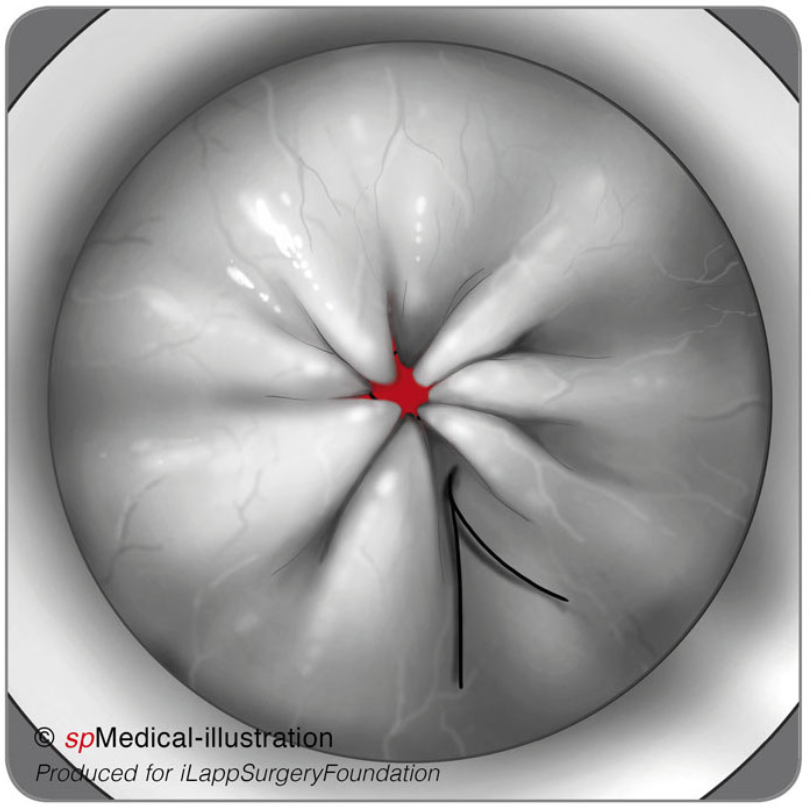
Non sealing pursestring suture
Videos Placement of Pursestring
The purse string is perfomed with a Prolene 0 suture with a small needle; we prefer a Surgipro 0. Stay at an even distance from the platform at all time, take small steps and when halfway already look where you have to end at 360°
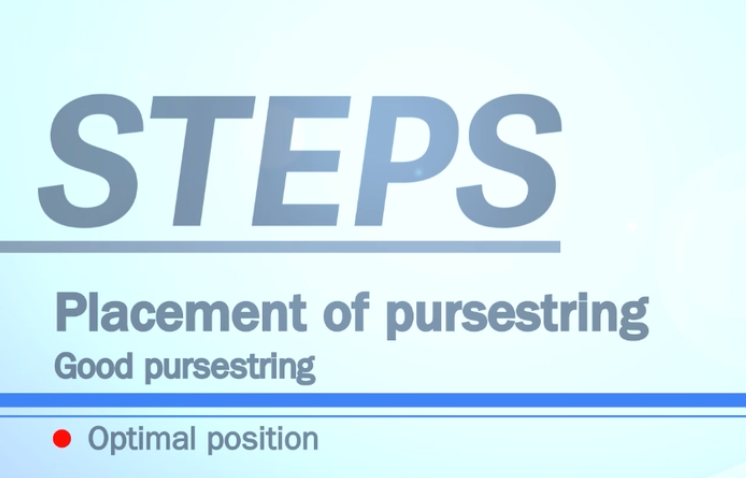
How to use the needle holder when performing a pursestring suture
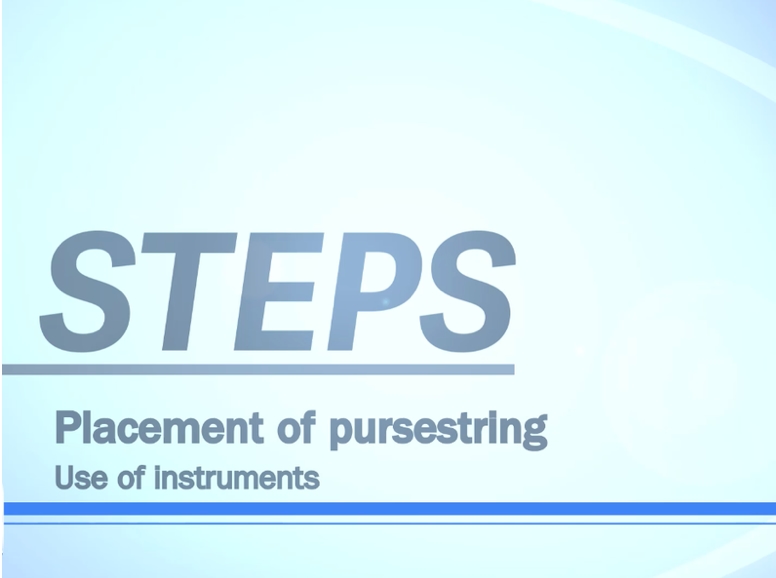
A suboptimal position of the platform results in a suboptimal pursestring suture
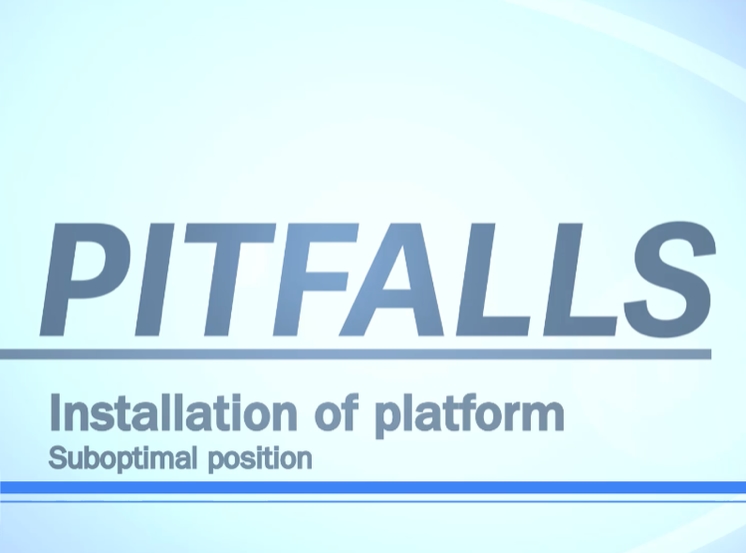
After completion of the suture the cap of the platform is removed and the suture can be tightened by hand
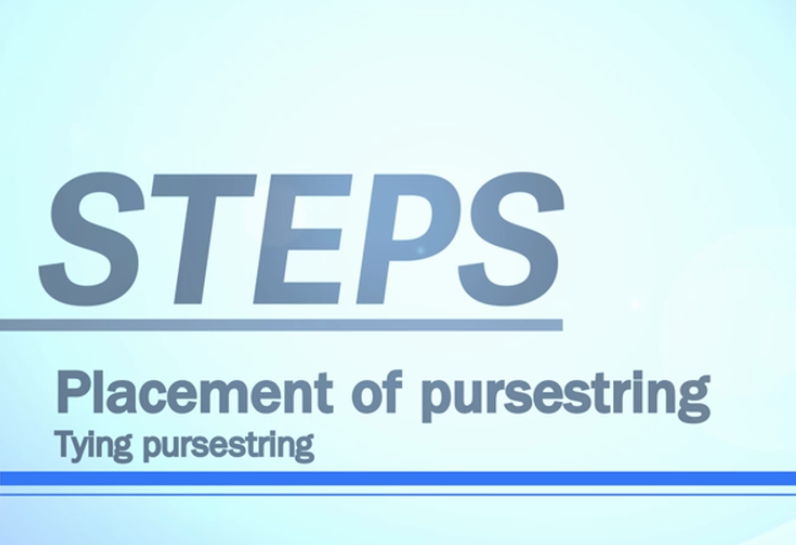
A non sealing pursestring suture with higher risk of contamination and possible tumor deposits
